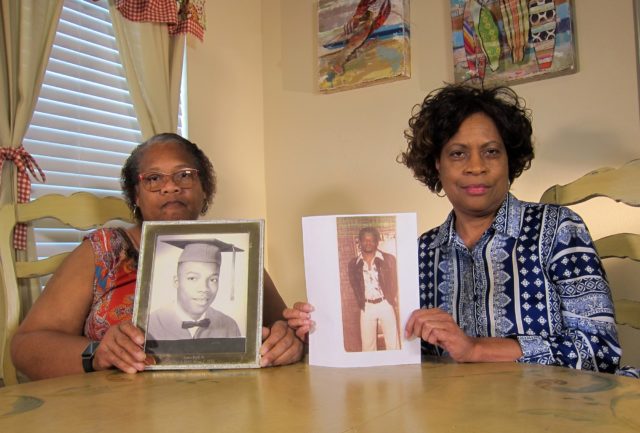By Morgan Harlan | Staff Writer
A man convicted in the 1998 dragging death of James Byrd Jr., a black man in East Texas, will be executed at 6 p.m. Wednesday in Huntsville at the Texas State Penitentiary.
John William King, 44, played a role in one of the most high profile hate crimes in United States history. On June 7, 1998 King and two other men dragged James Byrd Jr. behind a truck for three miles until he was killed and dismembered. Before he was chained to the truck, he was beaten and spray painted.
Most of Byrd’s body was found outside of a church in Jasper, and the rest of his body was found a mile and a half away.
King will be the second person that has been executed in Byrd’s murder. Lawrence Russell Brewer died in 2011 by lethal injection. The third man, Shawn Berry is sentenced to life in prison. King has appealed his case and continues to claim his innocence.
Dr. Cassy Burleson, a Baylor senior lecturer in journalism, public relations and new media, started covering Byrd’s murder in 1998 right after the crime. Burleson authored an article titled “Through a glass darkly: A comparison of Jasper Newsboy coverage with elite publications during the James Byrd Jr. murder.”
Burleson worked for the Neighborhood Youth Corps in inner city Dallas during the ’60s. During her Baylor graduate journalism program, Burleson took a class called Civil Rights in the Media taught by the late Baylor professor Dr. John King. The first paper she wrote about Jasper was for King’s class. She then published her first article as a member of Baylor’s staff.
When Burleson first arrived in Jasper in 1998, she told the editor and publisher of the “Jasper Newsboy,” Willis Webb, that she was in Jasper for the long haul.
“I told Willis I wasn’t a fly-by-night reporter; I was there to research and find the truth,” Burleson said.
Dr. Mia Moody-Ramirez, professor and graduate program director in the journalism, public relations and new media department, joined Burleson in her Jasper research. They have been co-conducting studies in Jasper for the last 21 years.
Burleson and Moody-Ramirez met at Baylor during their graduate program. They became friends during class and spent time doing homework together.
In 2014, “Sixteen Ain’t So Sweet: Jasper Dragging Longitudinal Study,” co-authored by Burleson and Moody-Ramirez, was the first article published by the pair. The 16-year study uses Critical Race Theory to examine how people connected to Jasper view the effects of the 1998 murder of Byrd.
“It has been a learning experience and we have become their friends,” Moody Ramirez said about the interviewees in Jasper. “We stay in touch with many of them, and we want to see Jasper do well and heal.”
The article compares local and national news media coverage of the murder of Byrd, particularly comparing the “Jasper Newsboy,” the “New York Times,” the “Los Angeles Times” and “USA Today.” The study found that local and national coverage differed dramatically in the early stages of the case but converged as the national publications gained a better understanding of the political and cultural context of the murder. The study suggests that national publications’ preconceived ideas about culture and race relations in East Texas were responsible for the initial differences.
They interviewed Byrd’s sisters, Jasper’s police chief and other members of the Jasper community.
Baylor’s Institute for Oral History transcribes all of the Longitudinal Study’s interviews for their research. Burleson said that their support and their transcriptions help make their research possible.
“We would not have time for everything we are doing without their help,” Burleson said.
The two professors have continued their research in Jasper and are planning on conducting another round of research and interviews.
“I think our next interviews will be our best ones,” Burleson said. “The publicity this time might result in people more willing to talk.”
Burleson and Moody-Ramirez’s research is sponsored by The Baylor University Institute for Oral History, The Baylor American Studies Program and The Baylor Department of Journalism, PR & New Media.
Their project is titled “Jasper Dragging,” and interviews from December 2011 to Feburary 2013 have been transcribed by the institute and can be found online. There are 31 interviews.
Legal actions have been taken to prevent hate crimes and punish the criminals thoroughly. In 2009, a law was passed in name of James Byrd Jr., and Matthew Shepard, a gay man who died as a victim of a hate crime, that brings attention to hate crimes specifically.
According to the United States Department of Justice, the Matthew Shepard and James Byrd, Jr., Hate Crimes Prevention Act of 2009 provides funding and technical assistance to state, local and tribal jurisdictions to help them to more effectively investigate and prosecute hate crimes. It also creates a new federal criminal law that criminalizes willfully causing bodily injury when the crime was committed because of the actual or perceived race, color, religion, national origin of any person or the crime was committed because of the actual or perceived religion, national origin, gender, sexual orientation, gender identity, or disability of any person and the crime affected interstate or foreign commerce or occurred within federal special maritime and territorial jurisdiction.
To learn more about Burleson and Moody-Ramirez’s continuing Jasper study visit their website, and to visit the oral history project visit Baylor’s digital collections website.


